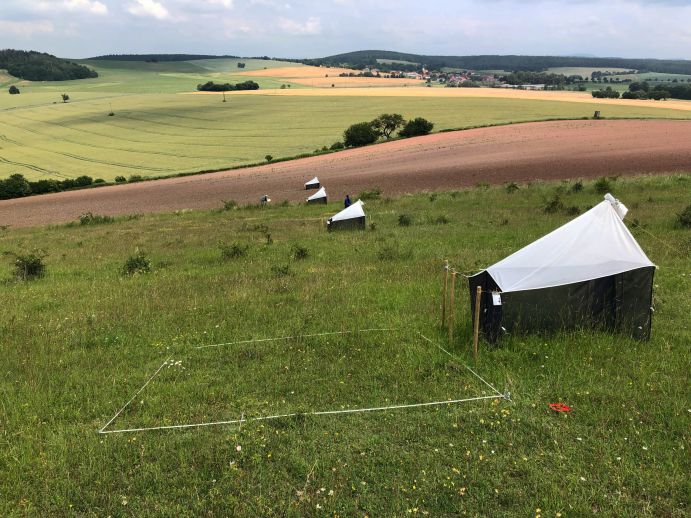Diversity of Insects in Nature protected Areas (DINA)
The collaborative research project “Diversity of Insects in Nature protected Areas (DINA)” examines the causes of insect decline in nature reserves. The project develops joint recommendations for decision making and viable measures for the better protection of biodiversity together with local land users. The BMBF is supporting the project with a total 4.2 million euros.
Germany has experienced a severe loss of insect populations in recent decades, which also jeopardizes biodiversity in protected areas. The long-term study by the Entomologischer Verein Krefeld, published in 2017, provided first proof that overall flying insect biomass in protected areas has declined by up to 75 percent since 1989. However, fundamental questions about the correlations and drivers of this worrying decline remain largely unanswered.
The DINA project launched in May 2019 investigates which and to what extent causes such as habitat fragmentation and islandization, land use or ecotoxicological stress contribute to insect mortality. The project tracks flying insects in 21 representative nature reserves using a standardized method. DNA metabarcoding is used to identify insect species. This insect monitoring project will generate the most comprehensive database on the composition of flying insect communities in Germany's nature reserves. Information on pesticide load is gathered from chemical analyses of soil, vegetation, insects and water and from surrounding agricultural land.
A distinctive project property is its interactive, multidisciplinary approach. "Social labs" explore how to make decisions that are beneficial to biodiversity conservation through dialogue with land users, estate managers, conservationists and landowners. This dialogue format will highlight conflicts, consensus and dissent, and develop sustainable options for action. By involving local players, local and national stakeholders and organizations, the project also promotes cooperation between different actors.
The project will produce evidence-based policy recommendations resulting from a synthesis process. These recommendations are expected to contribute to a more effective protection of biodiversity that can be implemented with the involvement of the various local actors.
Eight partner institutions collaborate in the project:
- Nature And Biodiversity Conservation Union (NABU, Coordinator)
- Institute for Social-Ecological Research, Frankfurt/Main (ISOE)
- Bonn-Rhein-Sieg University of Applied Sciences
- University of Koblenz-Landau
- Entomologischer Verein Krefeld e.V.
- Justus Liebig University Giessen
- Zoological Research Museum Alexander Koenig - Leibniz Institute for Animal Biodiversity
- Leibniz Institute of Ecological Urban and Regional Development (IOER)
Last updated on




